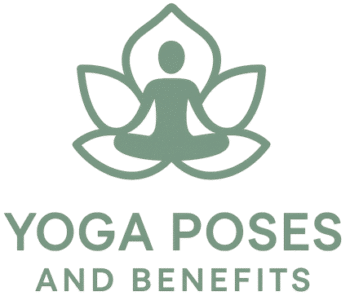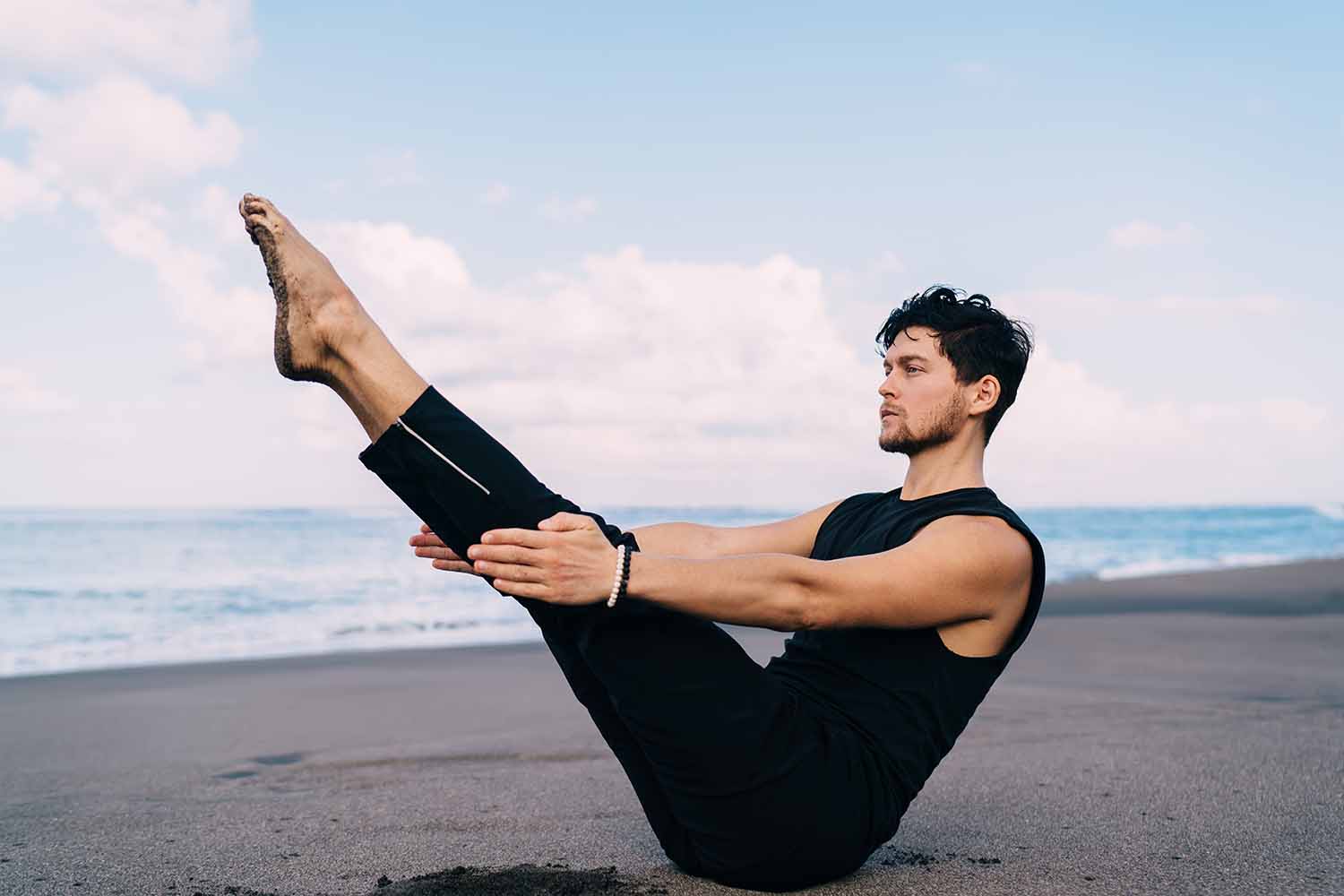Boat Pose in yoga, known as Navasana in Sanskrit, is a yoga asana that symbolizes strength, balance, and core engagement. This seated posture challenges practitioners to lift their legs and find stability while improving core strength. In this comprehensive guide, we will explore the intricacies of Boat Pose, from its basic instructions to advanced insights, and understand its role in yoga sequences.
Other Names for Boat Yoga Pose
Boat Pose is recognized by various names in different yoga traditions and languages. Some common alternate names for Boat Pose include:
- Navasana (Sanskrit)
- Paripurna Navasana (Full Boat Pose)
- Half Boat Pose
How to do Boat Pose in Yoga
Proper alignment is essential to mastering Boat Pose. Here’s a step-by-step guide:
- Start in a seated position on your mat with your legs extended straight in front of you.
- Place your hands beside your hips, fingers pointing forward, and engage your core.
- Lean back slightly and lift your legs off the mat, creating a V-shape with your body.
- Balance on your sit bones, keeping your spine straight and chest open.
- Reach your arms forward, parallel to the floor, palms facing each other.
- Breathe steadily, holding the pose for 20-30 seconds, gradually increasing the duration.
- To release, lower your legs and sit back down.
Variations of Boat Yoga Pose
Boat Pose offers variations to accommodate different levels of practice and preferences:
- Half Boat Pose (Ardha Navasana): Bend your knees and lift one leg at a time, balancing on your sit bones.
- Low Boat Pose: Lower your legs closer to the mat while maintaining the core engagement.
Modifications for Boat Yoga Pose
Boat Pose is accessible to most practitioners, but some modifications can enhance comfort or accommodate specific needs:
- Bent Knees: If you have difficulty straightening your legs, keep your knees bent, or use a strap around your feet for support.
- Hands Behind: Instead of extending your arms forward, place your hands behind your hips to provide more stability.
Contraindications for Boat Pose in Yoga
While Boat Pose is generally safe, there are a few contraindications and precautions to consider:
- Recent Abdominal Surgery: Individuals who have had recent abdominal surgery should avoid Boat Pose.
- Neck and Back Injuries: People with neck or back injuries should practice with caution and may need to modify the pose.
Tips to Improve Boat Pose in Your Practice
- Core Activation: Focus on engaging your core muscles to maintain balance and stability.
- Breath Awareness: Concentrate on your breath, inhaling deeply to maintain strength and stability.
- Progressive Practice: Start with Half Boat Pose and gradually work towards the full expression of Boat Pose.
- Micro-Movements: Use micro-movements to fine-tune your balance and alignment in the pose.
What Muscles Does Boat Pose Work?
Boat Pose engages and strengthens various muscle groups in the body:
- Rectus Abdominis: Tones and strengthens the rectus abdominis, creating a flat and strong core.
- Hip Flexors: Stretches and strengthens the hip flexors.
- Lower Back: Engages and strengthens the lower back muscles to support the spine.
Mental and Emotional Benefits of Boat Pose in Yoga
Beyond its physical aspects, Boat Pose offers numerous mental and emotional benefits:
- Balance: Boat Pose fosters a sense of balance, both physically and mentally.
- Willpower: Practicing the pose encourages willpower and determination, as it requires concentration and strength.
- Confidence: Achieving and holding Boat Pose can boost self-confidence and self-esteem.
Is Boat Yoga Pose Suitable for Beginners?
Boat Pose is accessible to beginners, but it may require practice to achieve the full expression.
Is Boat Pose in Yoga Suitable for Advanced Practitioners?
Advanced practitioners can deepen their practice by extending the duration and exploring variations like Half Boat Pose and Low Boat Pose.
How Does Boat Pose Contribute to a Yoga Sequence or Flow?
Boat Pose plays a significant role in yoga sequences and flows:
- Core Sequence: It serves as a central pose in sequences designed to strengthen the core and improve balance.
- Balancing Sequence: Boat Pose can be included in sequences that focus on balancing postures to challenge and enhance stability.
- Cooling Down: The pose can also be used in sequences to cool down before relaxation and meditation.
How Can I Deepen My Practice in Boat Pose?
To deepen your practice in Boat Pose, consider the following:
- Core Strengthening: Incorporate core-strengthening exercises into your practice to build the strength needed for Boat Pose.
- Breath Control: Use controlled and steady breath to improve balance and concentration in the pose.
- Progressive Challenge: Gradually extend the duration of the pose or explore more challenging variations.
Common Mistakes in Teaching Boat Yoga Pose
To be an effective yoga teacher, it’s crucial to avoid common teaching mistakes, including:
- Neglecting Core Engagement: Not emphasizing the importance of core engagement can lead to students losing balance and stability.
- Rushing into the Pose: Encouraging students to rush into the full expression of Boat Pose without proper warm-up or progression can result in discomfort and potential injuries.
- Insufficient Modification Options: Not offering modifications for students who struggle with the pose may discourage them from attempting it or exploring variations.
In conclusion, Boat Pose (Navasana) is a yoga asana that symbolizes strength, balance, and core engagement. It offers numerous physical, mental, and emotional benefits, making it suitable for practitioners of all levels. Whether you’re a beginner or an advanced practitioner, focusing on alignment, variations, and mindful aspects of this pose can deepen your experience and enhance its role in your yoga journey. Through strength and balance, Boat Pose empowers you to find stability and navigate the waters of life.
Namaste.
Why is boat pose so hard?
Boat pose is difficult because it requires strong core engagement, hip flexor activation, and hamstring flexibility. Maintaining proper alignment in this pose—also known as Navasana in yoga—challenges the rectus abdominis, psoas muscles, and spinal stability, making it demanding for balance and endurance.
Who should not do boat pose?
Individuals with lower back pain, herniated discs, or neck injuries should not do boat pose, also known as Navasana. This core-strengthening yoga posture places pressure on the spine and hip flexors, making it unsuitable for those with spinal conditions or during pregnancy. Using props like yoga blocks or practicing under supervision can help modify the pose safely.
Why can’t I do boat pose?
Struggling with Boat Pose (Navasana) often results from weak core muscles, tight hip flexors, or limited hamstring flexibility. This yoga posture requires engagement of the abdominal muscles, balance, and spinal alignment. Tools like yoga blocks or straps can support proper form during practice.
How long should you hold a boat pose for?
You should hold a boat pose (Navasana) for 20 to 60 seconds, depending on your core strength and experience level. As a key posture in yoga and Pilates, boat pose activates the abdominals, hip flexors, and spine stabilizers. Using a yoga mat can improve stability during the hold.

